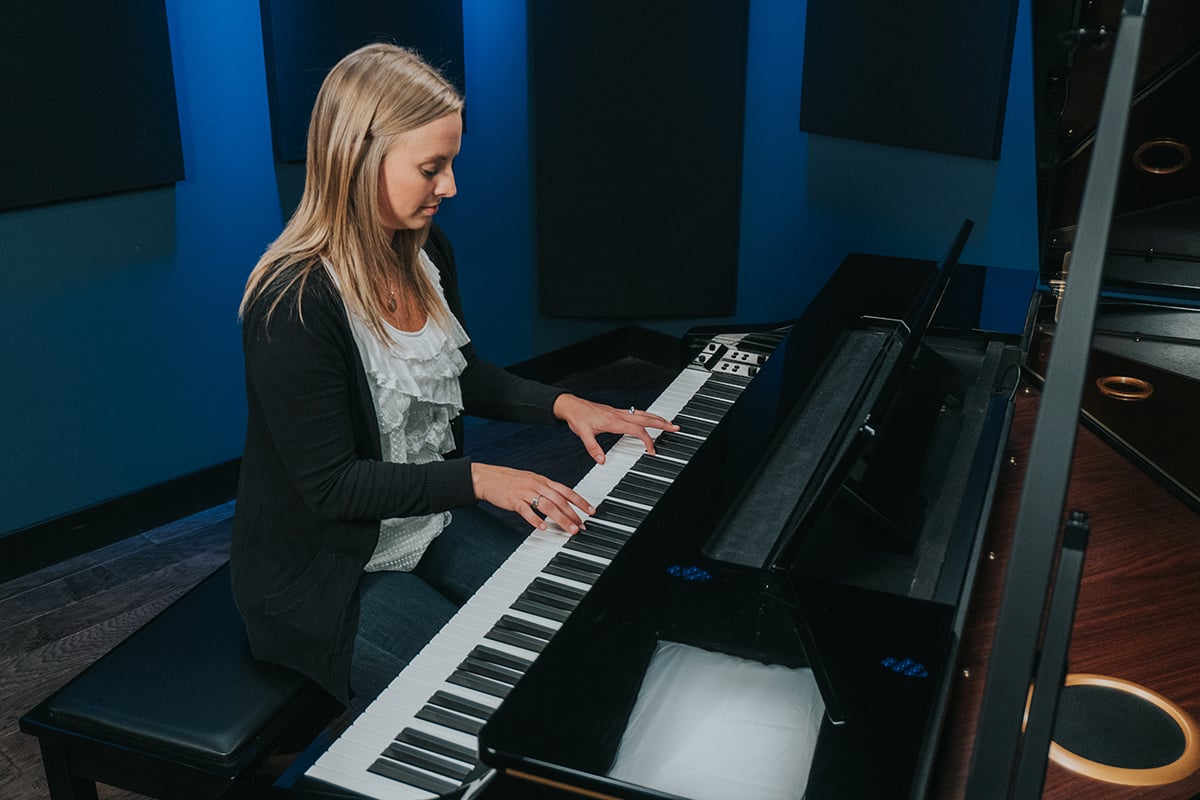Scales can be boring. I get it.
Nobody wants to sit down and play endless scales. But there’s a reason scales exist.
Simply, they are the BEST technical exercise you can do on the piano. Hands down.
Don’t believe me? Here’s why.
Scales help with
So if you haven’t figured it out yet — you should definitely be playing scales.
When we start learning scales, we do so by playing them in one octave. That’s fine. But there comes a time when we need to break out of that mold. Doing so requires some practice, as it involves additional thumb tucks and crossovers. We need to master these in order to move beyond a single octave.
The payoff for doing so — is big. Once we get the skills to play scales over two octaves, it’s super easy to move to three and even four-octave scales. That’s because the technique is exactly the same. We are just repeating it.
And once you can play four-octave scales, hands together, you’ll feel like an absolute piano boss. You’ll be comfortable in every part of the keyboard, and it will make learning new songs a breeze.
So how do we do it? Cassi has three exercises that’ll help you expand your scales.
To start with, we’re only going to play a single octave scale. BUT we are going to end the scale with our thumb instead of our pinky. This will feel a bit weird, to begin with, but it’s vital to play multi-octave scales. When you get the top (or bottom for the left hand) of the scale, cross your thumb under and hit that top note. Then come back.
Once you have practiced that a few times, it’s time to play a two-octave scale. So as before, play up one octave until you reach the top, then cross that thumb under and reset your hand over the keys. Now we are in position to continue the scale in the second octave.

Technique is the foundation to piano playing. If technique has been holding you back from playing the songs you love, check out Piano Technique Made Easy with Cassi Falk. This course, free with your Pianote membership, will take you through all 12 major and minor keys as you master scales, arpeggios, chords, and more.
One of the uncomfortable things about playing multi-octave scales is how far our hands can get away from our body. It feels weird and unnatural. So by practicing it, we are getting our muscles comfortable with stretching out across the keyboard.
Do this exercise by playing a single octave scale in your right and left hand (separately) as far away on the keyboard as you can. Only play one octave, but make sure you use the thumb tuck we learned in exercise 1. Try playing in different key signatures to get even more comfortable.
If you thought the other exercises were weird — wait until you try this one.
We are going to play a single octave scale again — but this time pick a note to start on that is NOT the root note. So in the key of C, you could start on D, E, F, G, A, or B. It doesn’t matter, as long as it’s not C.
BUT THIS IS IMPORTANT! Make sure you keep the correct fingering for the scale. So if you start on D, start with the 2nd finger. If you start on E, start with the 3rd finger. If you start on F, use your thumb (remember the thumb tuck!)
This will get you comfortable with the correct fingering for the scale because you will need to think extra hard about where the crossovers and thumb tucks happen.
(Fun side note – by playing the C scale starting on different notes you are actually going to be playing different MODES. For example, staring on D will mean you’re playing the D Dorian mode – but that’s for another lesson)
I said it before — scales can be boring.
You don’t need to practice every key every day. BUT the difference between pianists who get better, and those who stay at the same level is practice. It can be a grind — but if you can commit 10 minutes to scales each practice you’ll see the benefits in no time.
So embrace the grind – and practice those scales.
Lisa Witt has been teaching piano for more than 20 years and in that time has helped hundreds of students learn to play the songs they love. Lisa received classical piano training through the Royal Conservatory of Music, but she has since embraced popular music and playing by ear in order to accompany herself and others. Learn more about Lisa.
/marketing/pianote/promos/april/banner-bg-m.webp)
We use cookies for traffic data and advertising. Cookie Policy »
/marketing/pianote/promos/april/banner-title.webp)